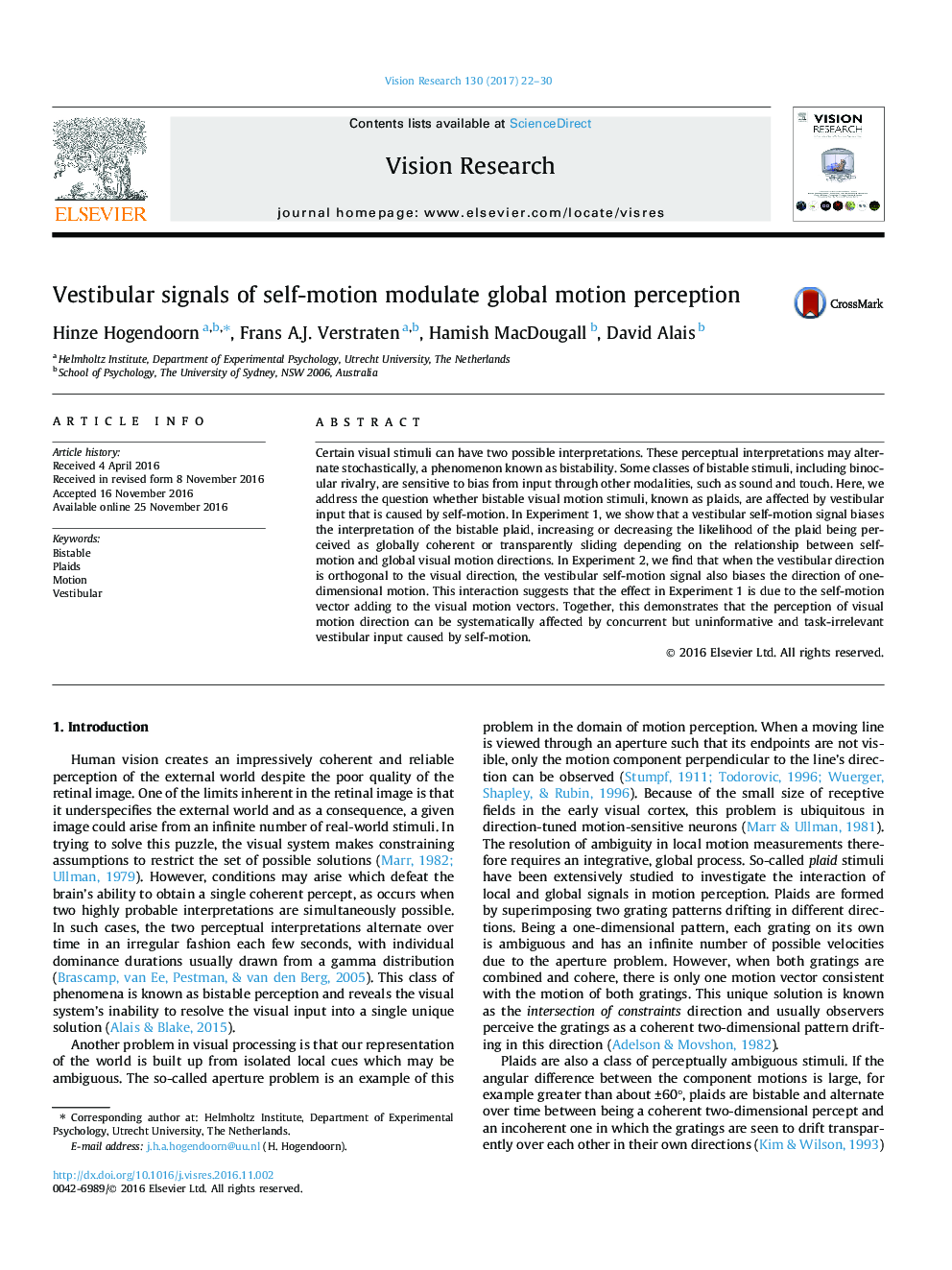| Article ID | Journal | Published Year | Pages | File Type |
|---|---|---|---|---|
| 5705928 | Vision Research | 2017 | 9 Pages |
â¢Self-motion biases the interpretation of bistable plaid stimuli.â¢Self-motion also affects the perceived direction of visual motion.â¢Effects are consistent with vector addition of visual and vestibular motion vectors.
Certain visual stimuli can have two possible interpretations. These perceptual interpretations may alternate stochastically, a phenomenon known as bistability. Some classes of bistable stimuli, including binocular rivalry, are sensitive to bias from input through other modalities, such as sound and touch. Here, we address the question whether bistable visual motion stimuli, known as plaids, are affected by vestibular input that is caused by self-motion. In Experiment 1, we show that a vestibular self-motion signal biases the interpretation of the bistable plaid, increasing or decreasing the likelihood of the plaid being perceived as globally coherent or transparently sliding depending on the relationship between self-motion and global visual motion directions. In Experiment 2, we find that when the vestibular direction is orthogonal to the visual direction, the vestibular self-motion signal also biases the direction of one-dimensional motion. This interaction suggests that the effect in Experiment 1 is due to the self-motion vector adding to the visual motion vectors. Together, this demonstrates that the perception of visual motion direction can be systematically affected by concurrent but uninformative and task-irrelevant vestibular input caused by self-motion.
